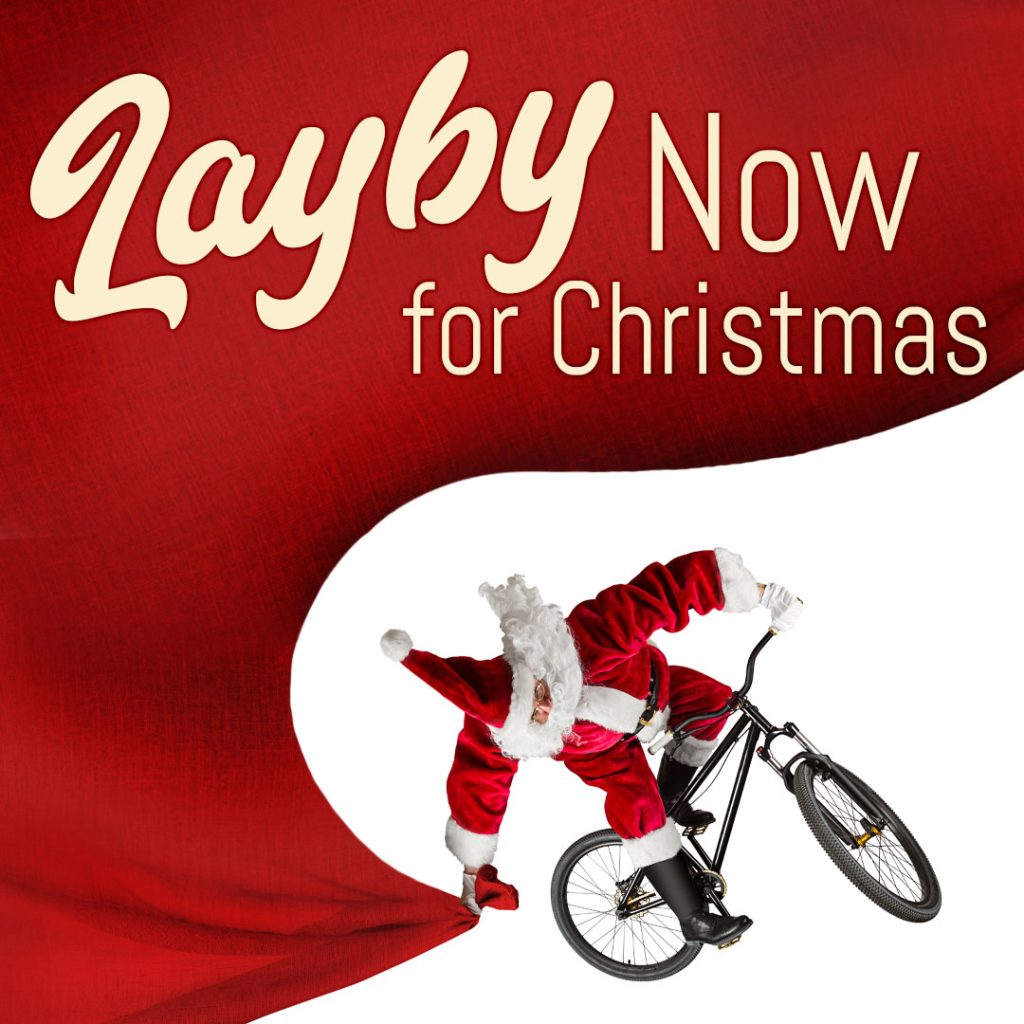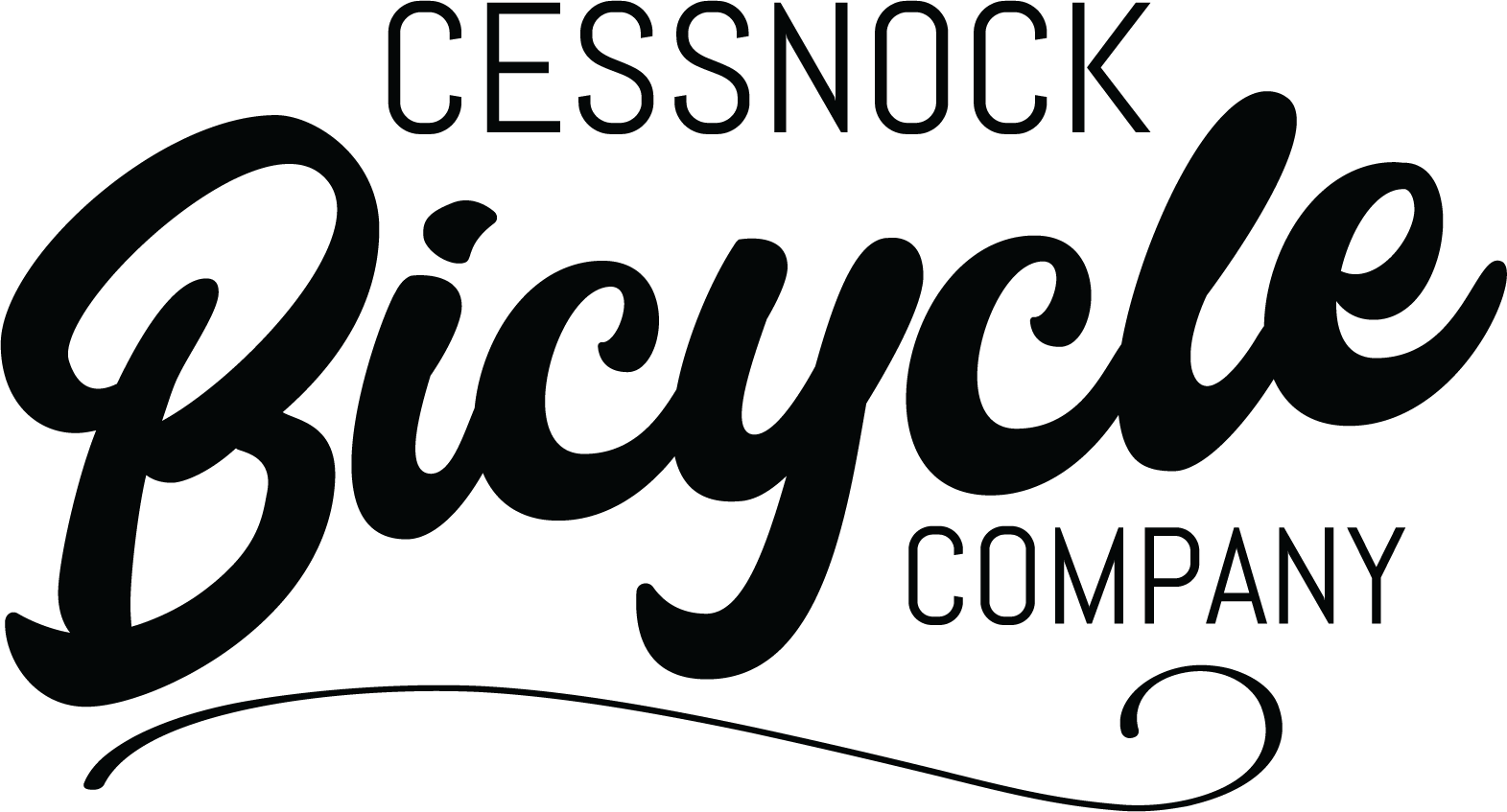Your cart is currently empty!
Kids bike fitting
By
.
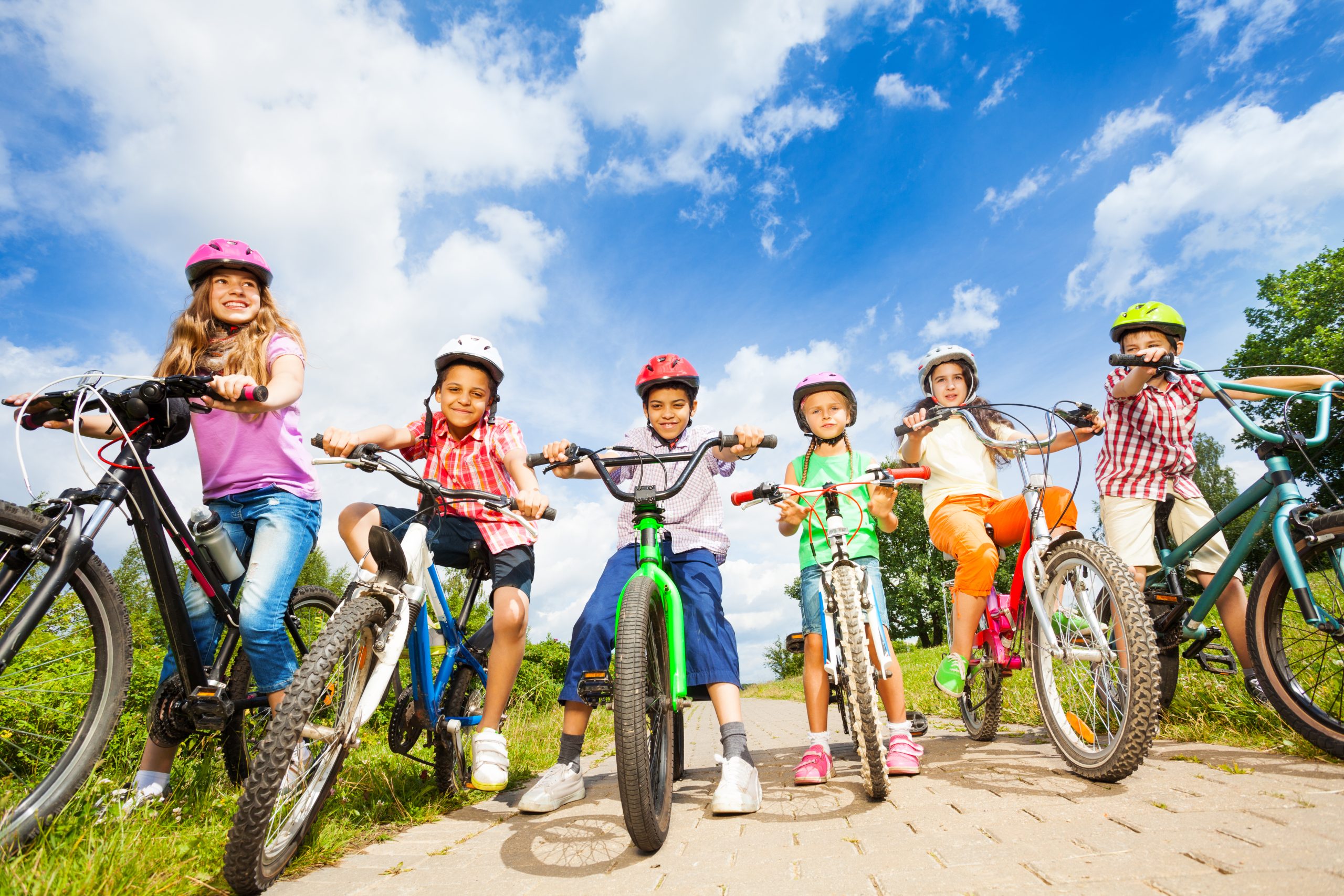
With spring and the holiday season approaching, now is a great time to look at bike sizing for kids.
All of the sizing we’ll do here is based on the wheel size, because this is how kids bikes are categorised. Also, we’re a bike shop and the bike industry still works in inches. Department stores always use metric sizes though, and it gets confusing if you want to compare apples with apples.
Here’s a comparison of the two sizing methods:
12 inch bikes are almost always described as 30cm bikes.
16 inch bikes are almost always described as 40cm bikes. We’ve also seen the department stores call these 15.75 inches…just to confuse everyone.
20 inch bikes are almost always described as 50cm bikes.
24 inch bikes are almost always described as 60cm bikes.
26 inch bikes are almost always described as 66cm bikes.
As a general rule, all of the bikes found in the five size categories are the same size, so a 16 inch bike from GT will fit the same size kid on a 16″ Cannondale or 16″ Mongoose.
Sometimes the premium models might feature options like suspension forks or disc brakes, and this might mean they’re better suited to the tall-for-their-age kids, or kids that are really advanced in bike riding.
This fitment chart from GT has an easy to understand graphic for single-speed bikes and MTBs:
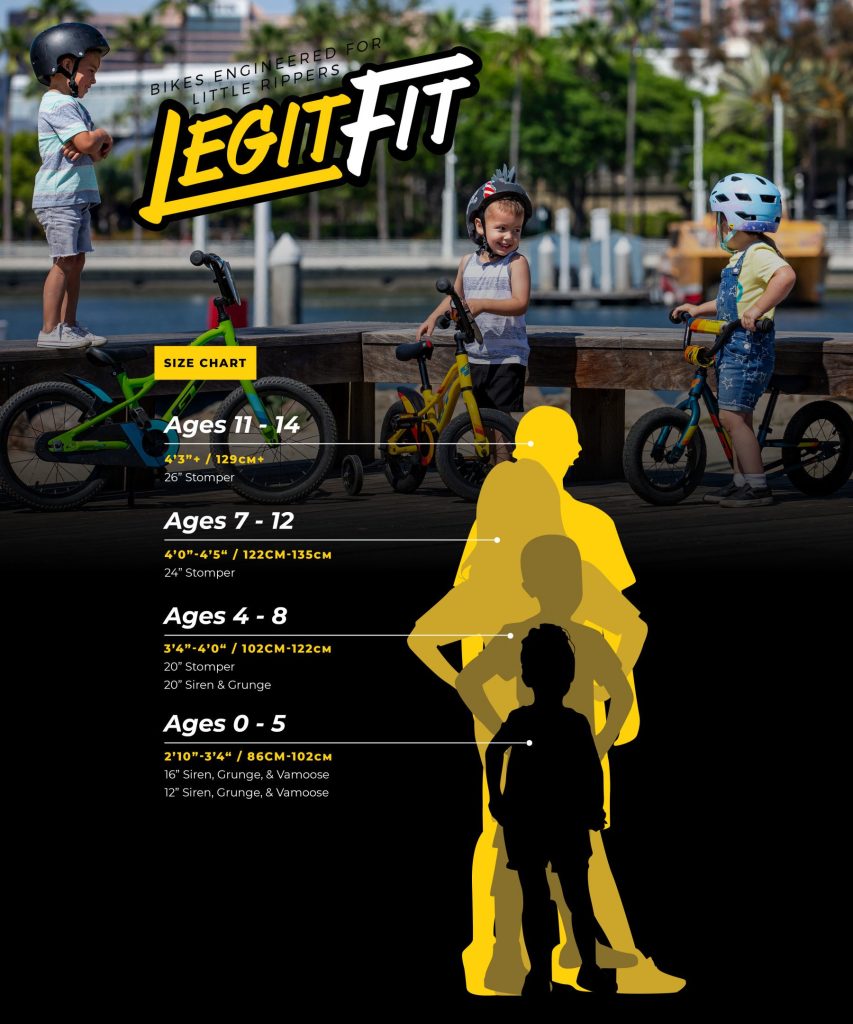
Ages 1-4 86cm-102cm 12″ wheel training bikes
Ages 4-6 86cm-102cm 16″ wheel training bikes
Ages 4-8 102cm-122cm 20″ wheel bike
Ages 7-12 122cm-135cm 24″ wheel bike
Ages 11-14 129cm+ 26″ wheel bike
Most kids will start off with a 12″ balance bike at 1-2 years old. This first year is critical in learning balance and control and is a great opportunity for families to enjoy local parks. Sometimes these bikes have brakes fitted, but generally they will be lightweight and minimalistic.
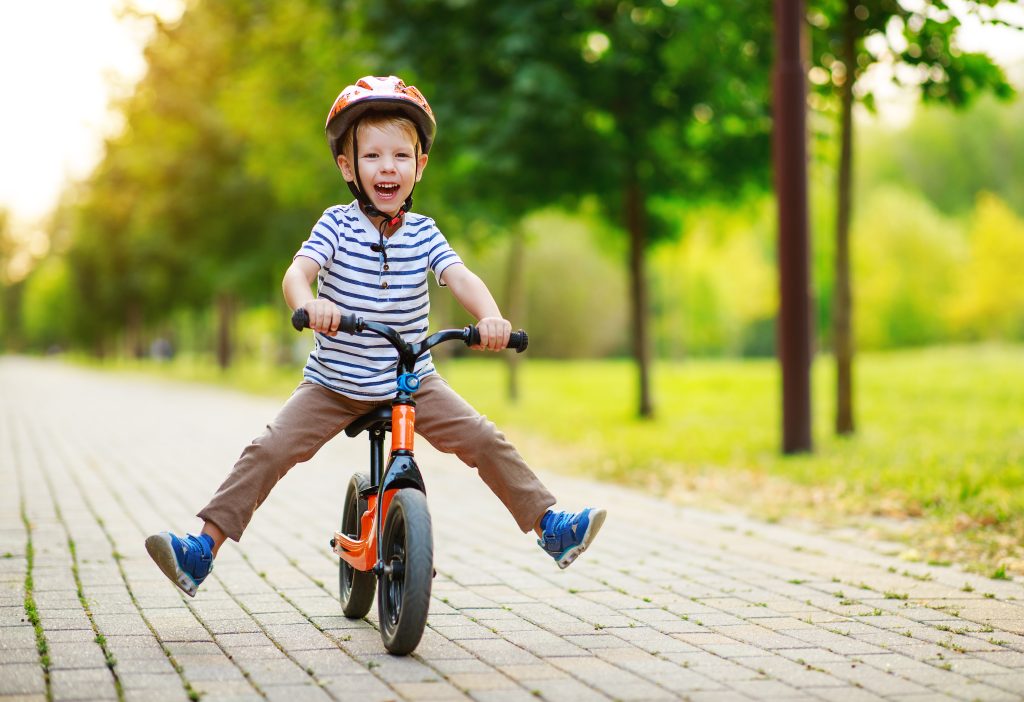
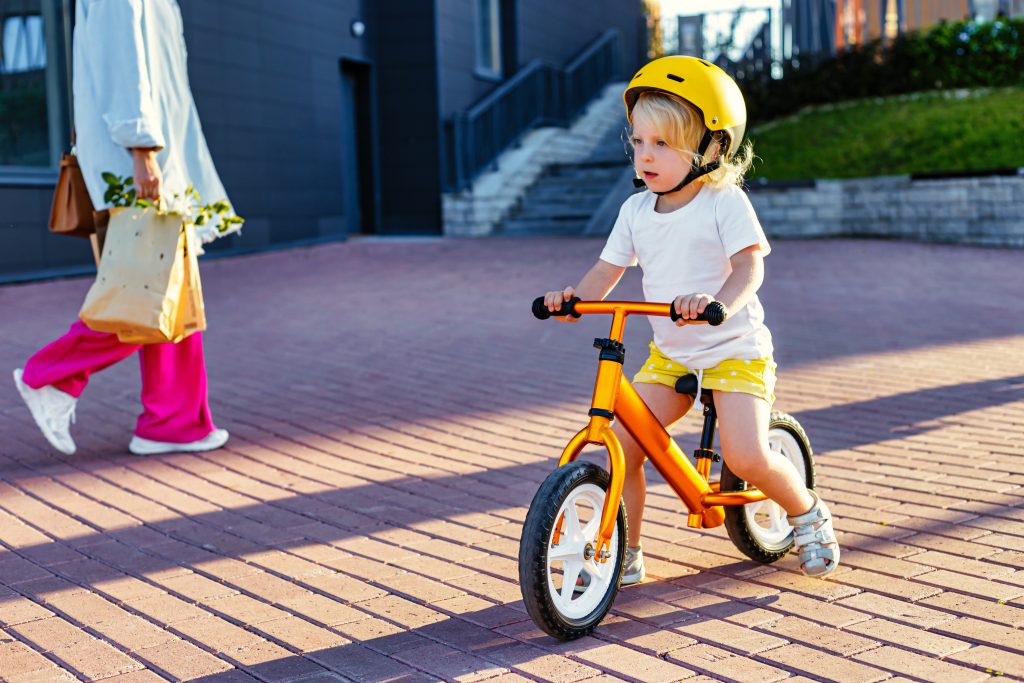
If your child has completed a year or two on a balance bike, they won’t need training wheels on their first pedal bike.
Depending on their height and age (check the chart above), their first pedal bike could have either 12″ or 16″ wheels.
- 12″ pedal bikes are an easy transition from a 12″ balance bike. The child already has riding balance so you’re only adding pedals and a back brake.
- 16″ pedal bikes are a little more challenging for kids when moving up from a 12″ balance bike. You may need to add the training wheels until they have confident control.
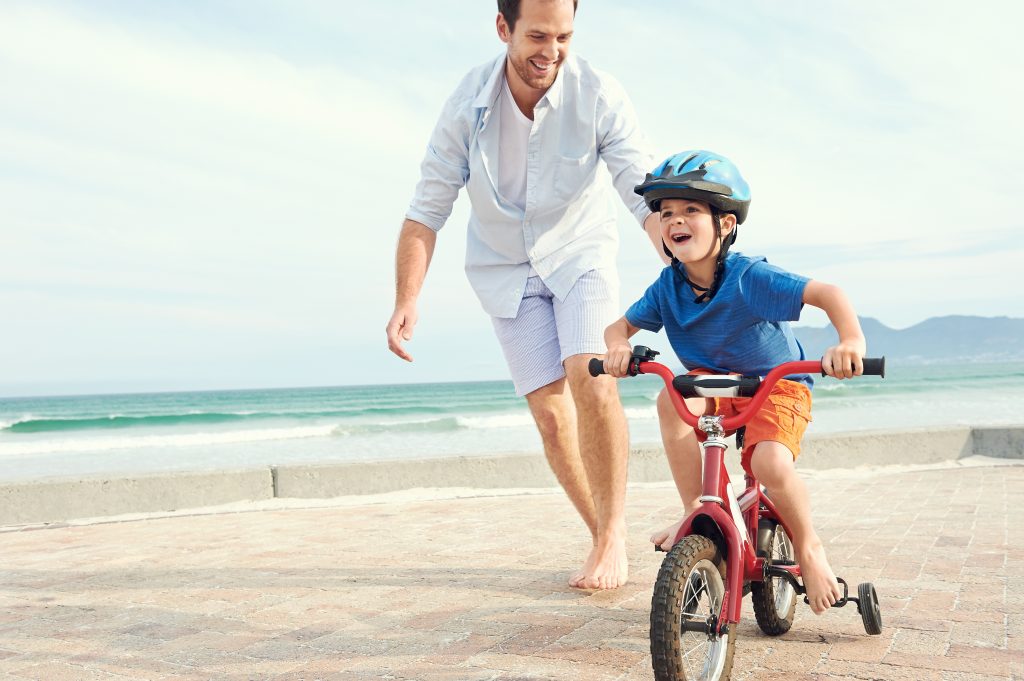
At around age 5 you should be thinking about a 20″ bike. A single speed bike with back-pedal brakes will be right for general purpose riding and trips to the park, while adventurous kids will want a BMX bike or a mountainbike with gears.
Let’s stop here and talk about training wheels.
Your child should be riding without training wheels by the time they are ready for a 20″ wheel bike. If they’re too big for a 16″ bike but you can’t get them to ride without training wheels then more practise is needed. We know this bit can be tough, stick at it!
Not all kids are the same though, and we have referred customers to Freedom Wheels in the past.
We are sometimes asked to fit training wheels to 20″ bikes and we never say yes. There are two factors at play and they combine in a dangerous way:
- 20″ bikes are not designed for training wheels and an aftermarket training wheel kit must be used. These kits are not very strong.
- A child of 6-8 years will weigh 20-25 kgs and be 110-120 cms tall
A tall, heavy child on a 20″ bike produces too much lateral load for the training wheels. If the child stands up and leans on the training wheels they can fold up causing an accident.
We only sell 12″ and 16″ bikes with training wheels, and we don’t have a 20″ bike with training wheels in our catalog. We sell the training wheel kits but do not fit them.
If you’ve tried everything and your child can’t ride without training wheels, talk to Freedom Wheels .
One of the most common questions we get is this: Aren’t all kids bikes called BMX bikes? What’s the difference?
Kids bikes come in three categories.
This is a Single Speed Bike:
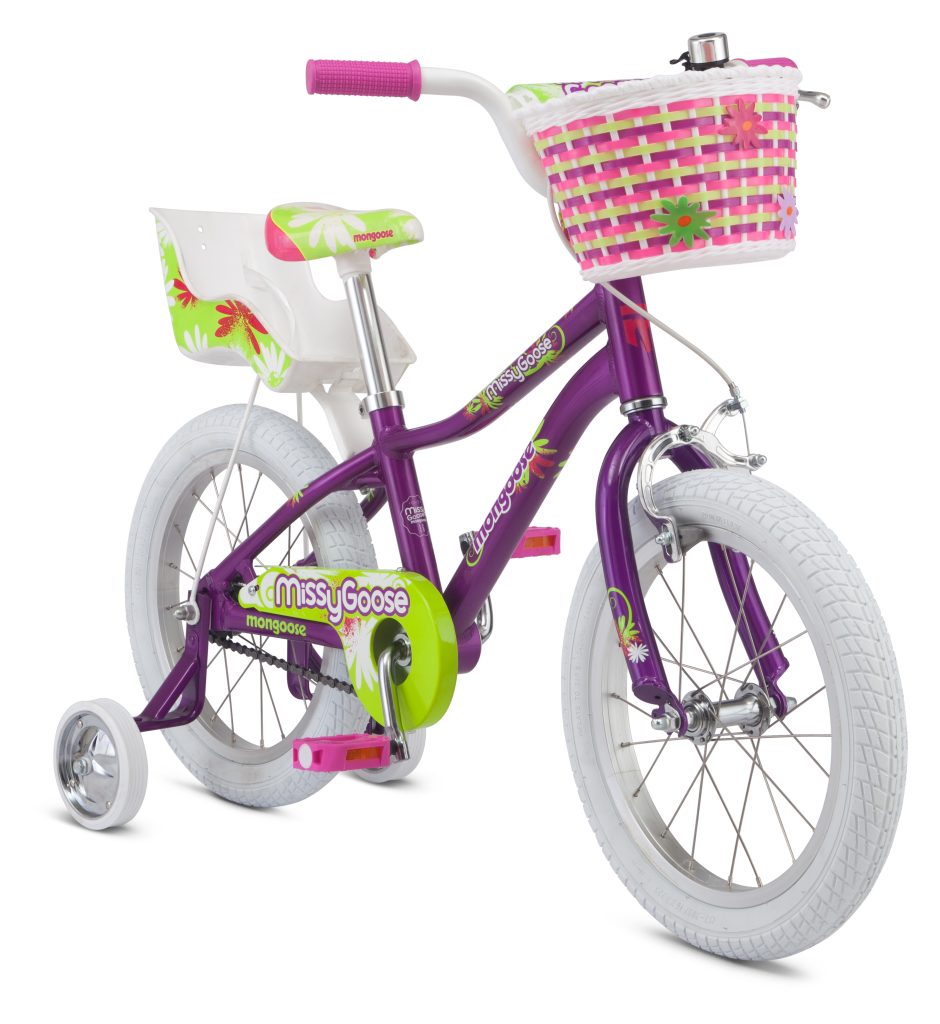
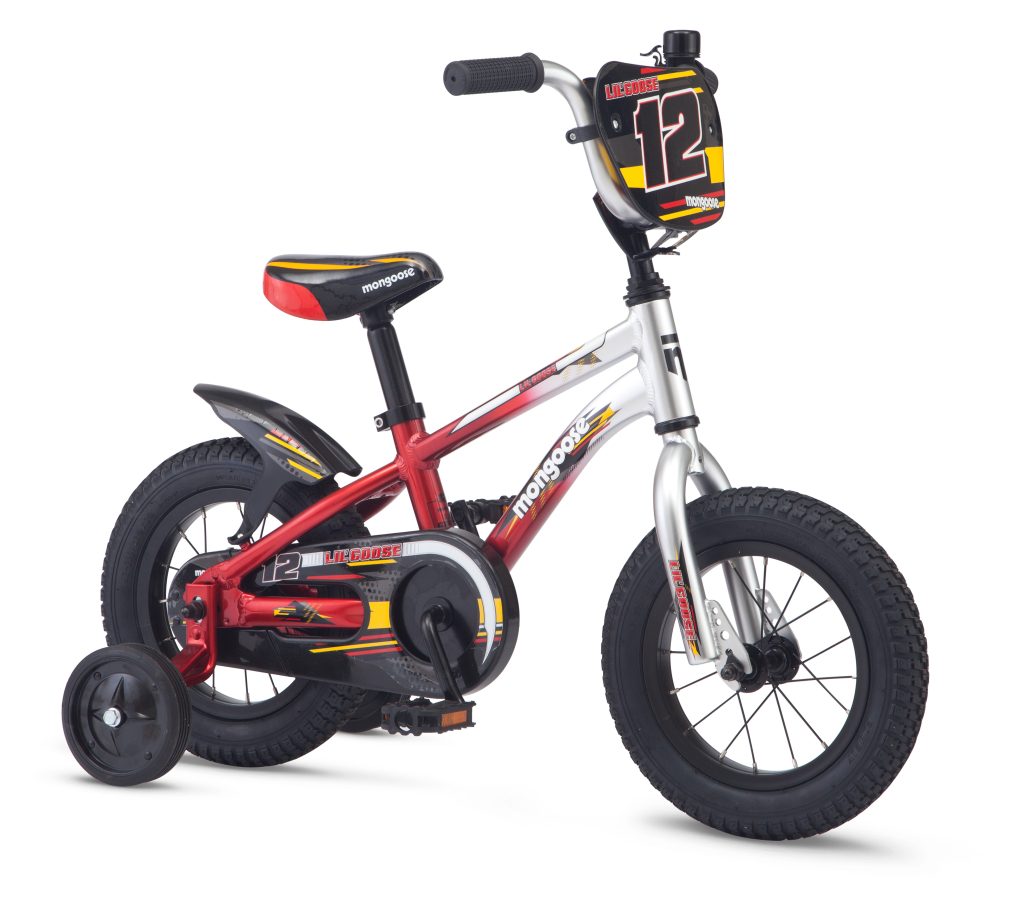
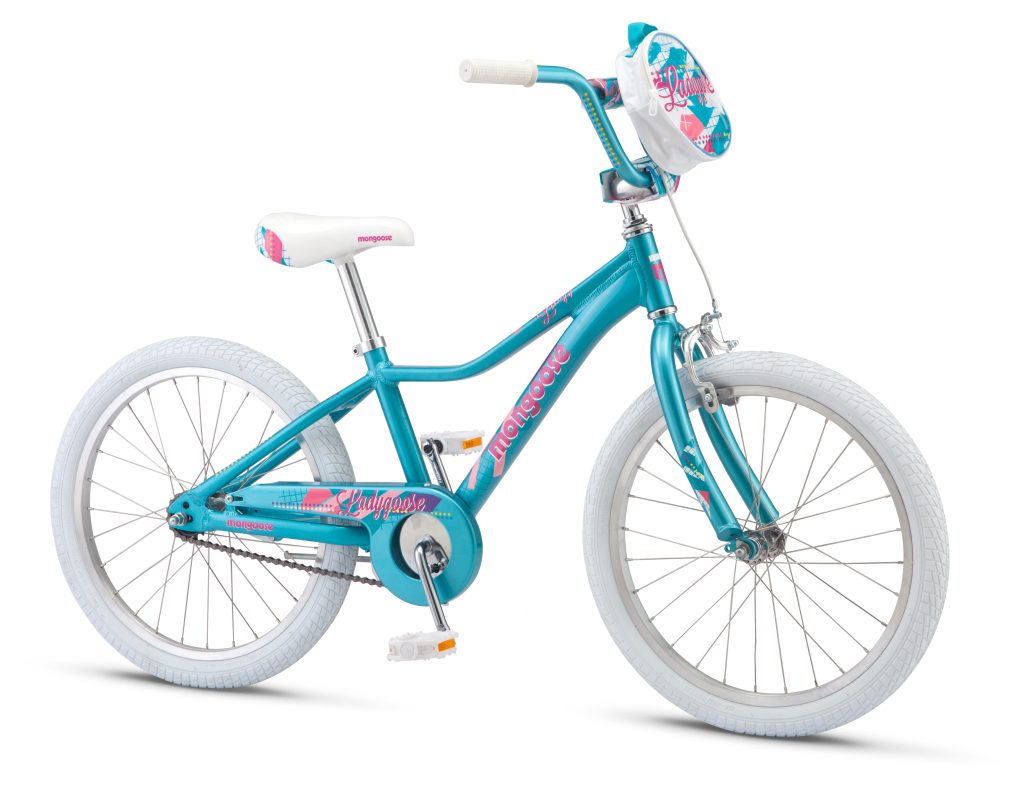
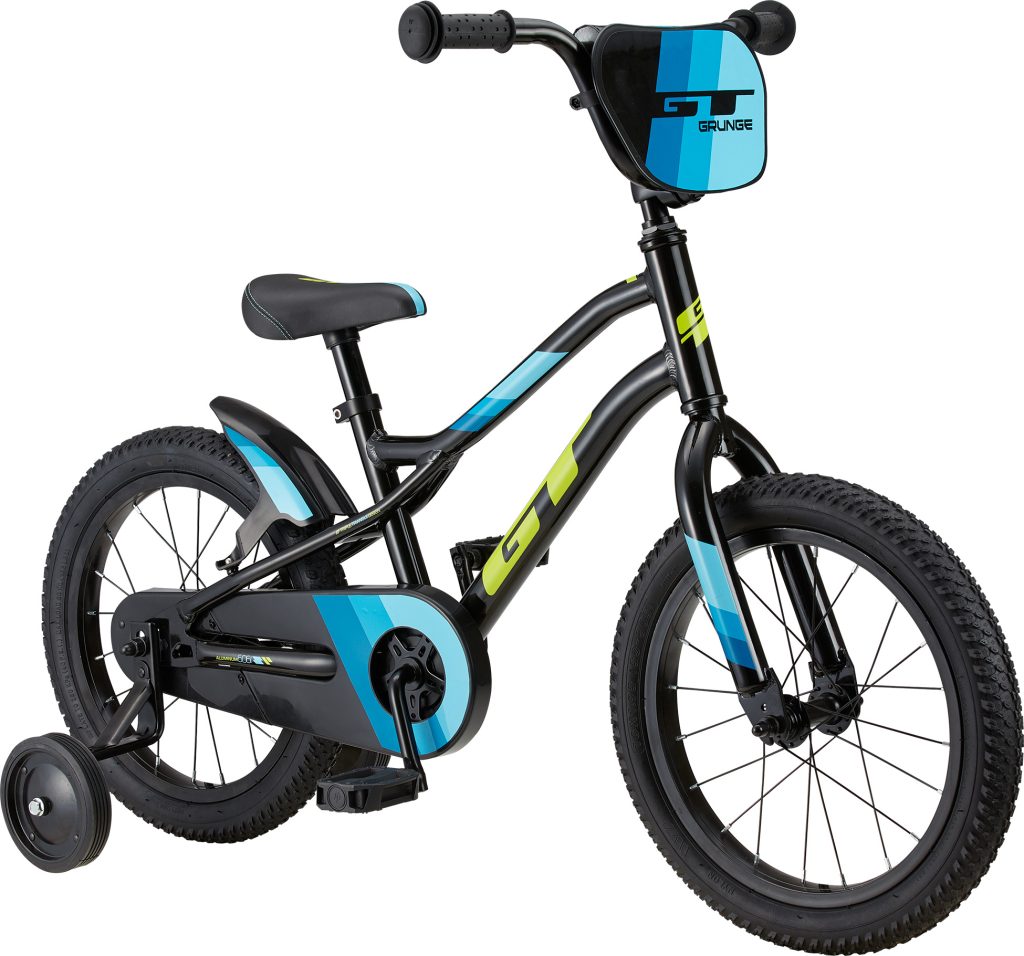
These bikes are different sizes and styles but all share the same design: they have one gear and back-pedal brakes. This simple braking systems is much easier for a child to work with, and at young ages they don’t have strength in their hands. Sometimes the 16″ bikes will have a hand-operated brake on the front, while the 20″ bikes almost always have one, and sometimes two. This lets kids learn how to use a hand brake as they develop the strength to use them.
Single speed bikes are great for casual riding at home or on a trip to the park, but they’re not for jumping or stunting. For that, you’ll need a BMX.
This is a BMX Bike:
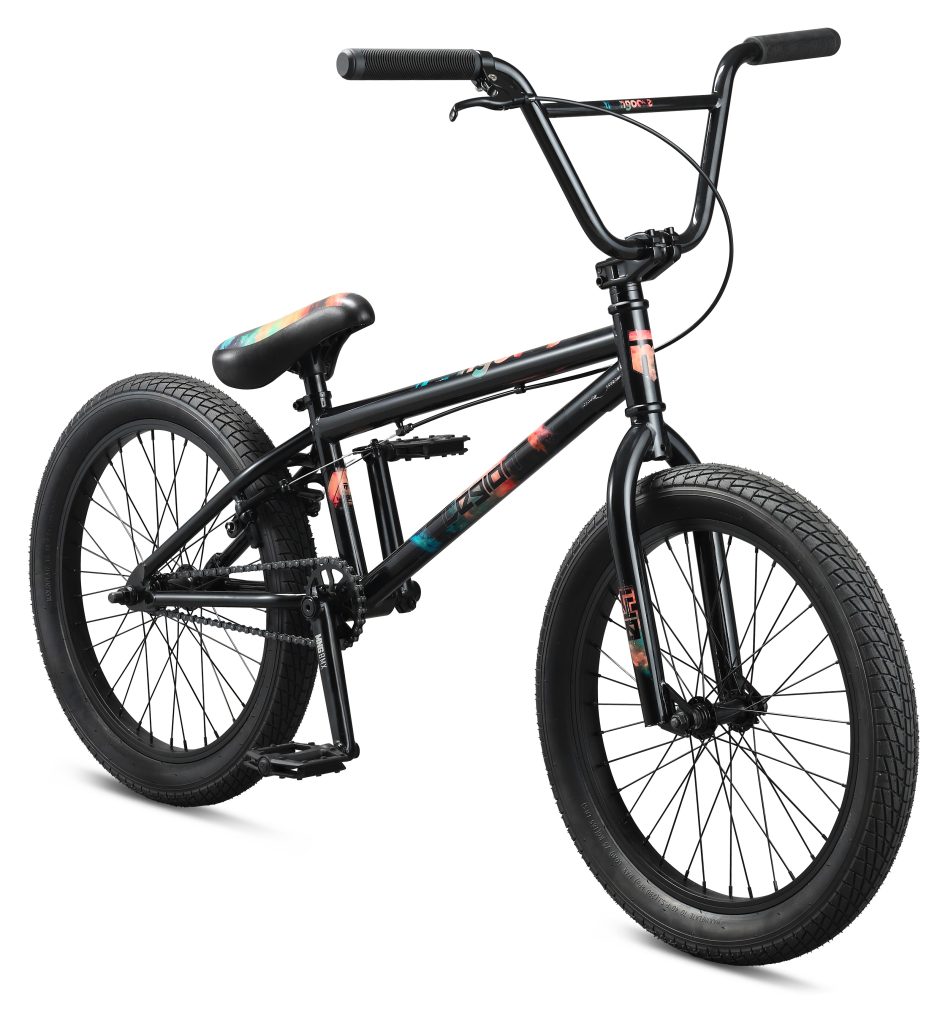
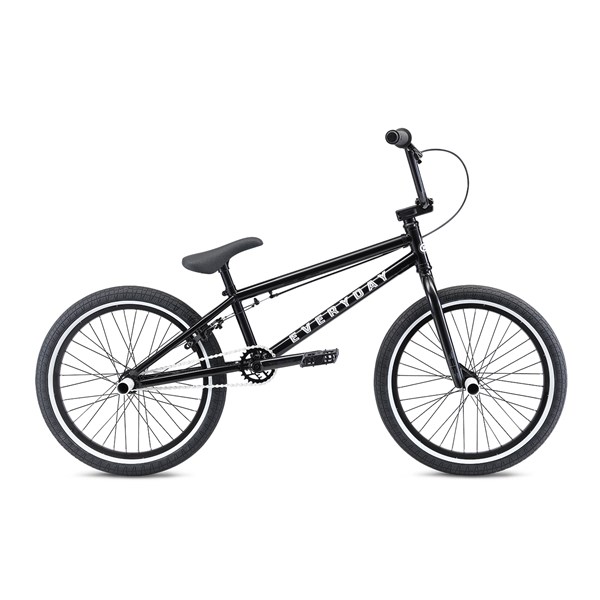
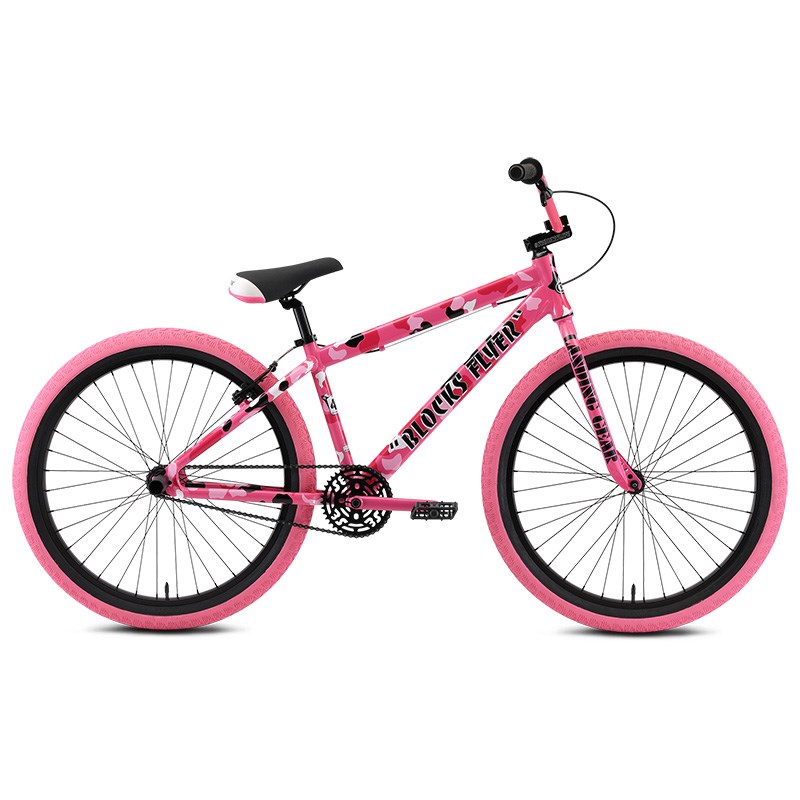
Again, while these bikes are different sizes (16″, 18″, 20″, 26″ and 29″) and multitudes of colours and styles they all share the same design: they have one gear and a ‘freewheel’ rear wheel, which means they can be pedalled backwards. No back-pedal brake on BMX!
Sometimes a BMX will have one brake and sometimes two. BMX bikes are designed with only a brake at the rear, but in Australia they come with an added brake at the front because of our design rules.
BMX bikes are for stunting and jumping and they’re built tough. They’re good for casual riding, skate parks, pump tracks and riding to school. They’re not great in the bush or for long distances – for that you’ll need a mountainbike.
This is a Mountainbike:
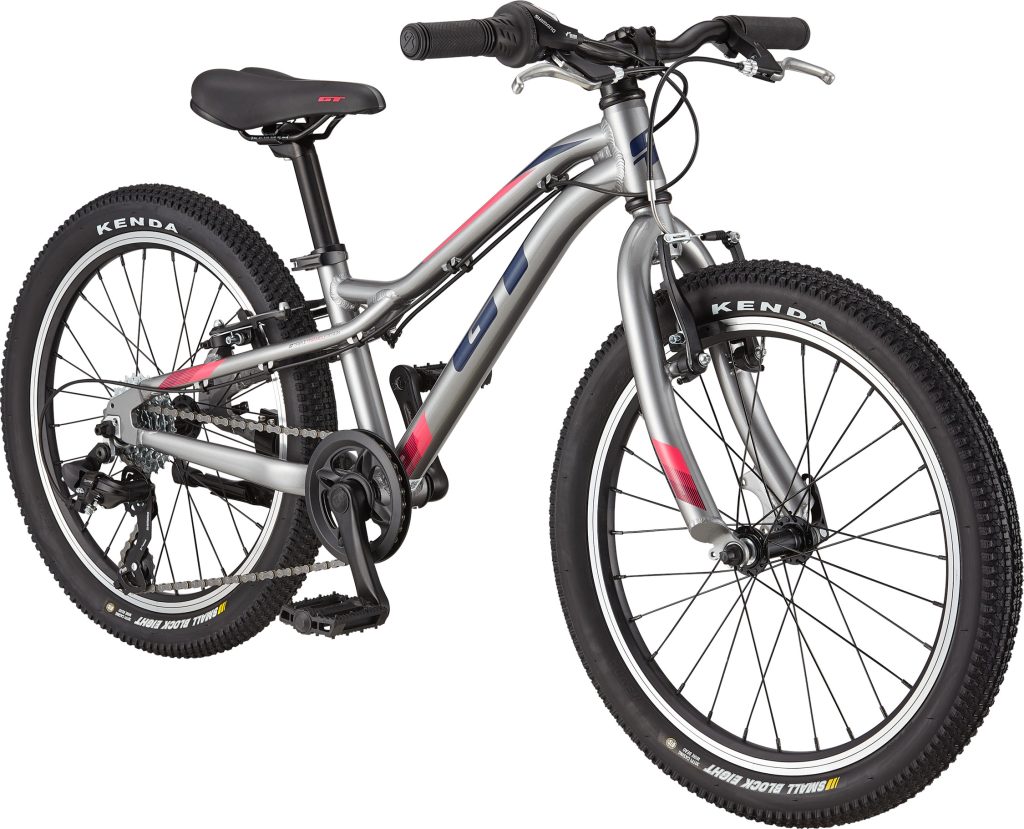
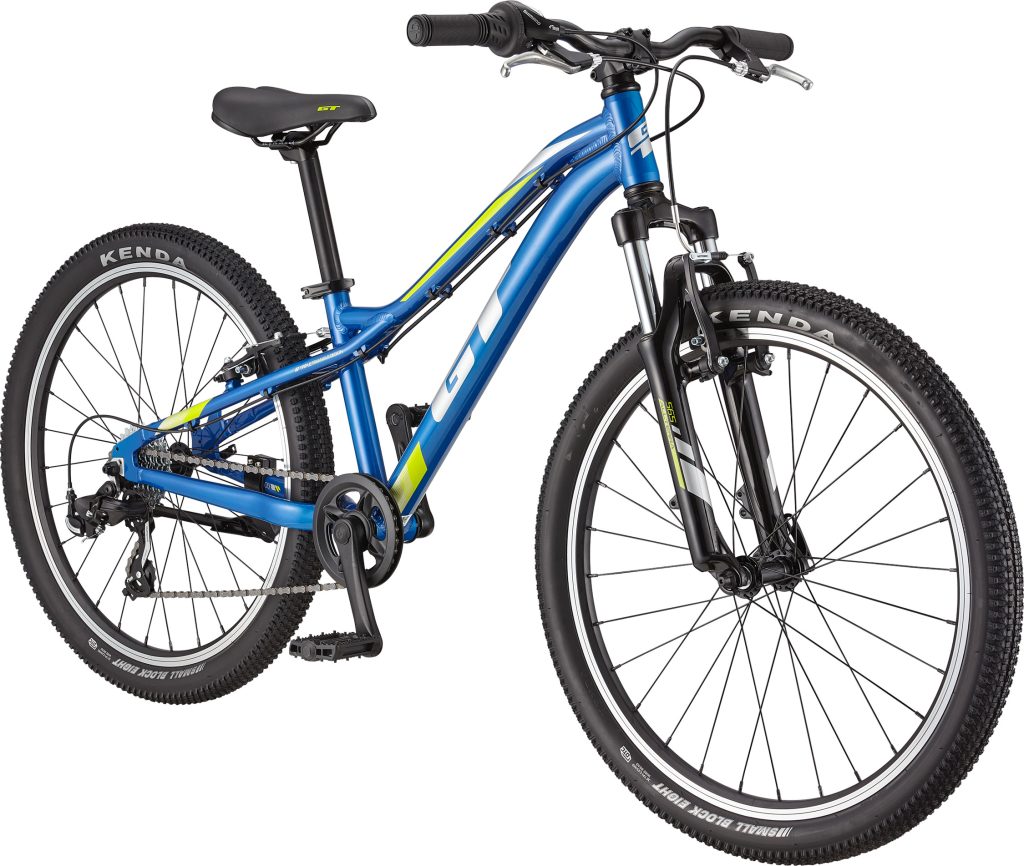
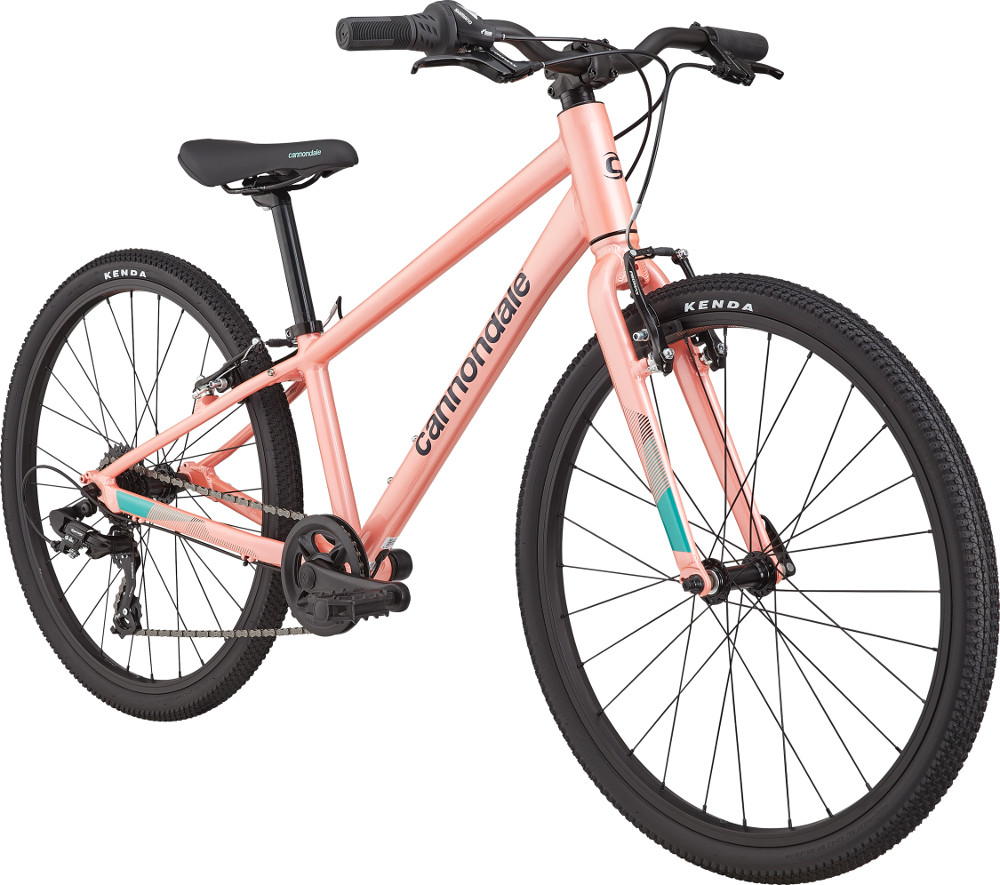
MTBs come with two hand brakes and multi-speed gears, usually 7 or 8 speeds. Kids can adapt to geared systems pretty quickly, and these bikes are designed for adventurous kids who want to explore or ride longer distances.
MTBs can come with suspension forks for off-road use, or rigid forks for casual riding and riding to school. Suspension forks add significant weight to a small bike, so choose a bike that suits the riding you’ll do.
Be careful when buying an MTB if your child has plans for riding at the skate park or BMX track. MTBs have lots of moving parts that are not built for jumping or stunting.
Here’s the options you have in each bike size:
| bike size | Single Speed | BMX | MTB |
| 16″ | ✅ | ✅ | |
| 18″ | ✅ | ✅ | |
| 20″ | ✅ | ✅ | ✅ |
| 24″ | ✅ | ✅ | |
| 26″ | ✅ | ✅ |
If you’re lucky enough to have a BMX park or pump track nearby then a 5 year old will want a 16″ BMX bike. These bikes also come in 18″ for the bigger kids around 7 years. At 9 or 10 years most BMX kids are ready for a 20″ bike, and they can ride 20″ BMX through their teens.
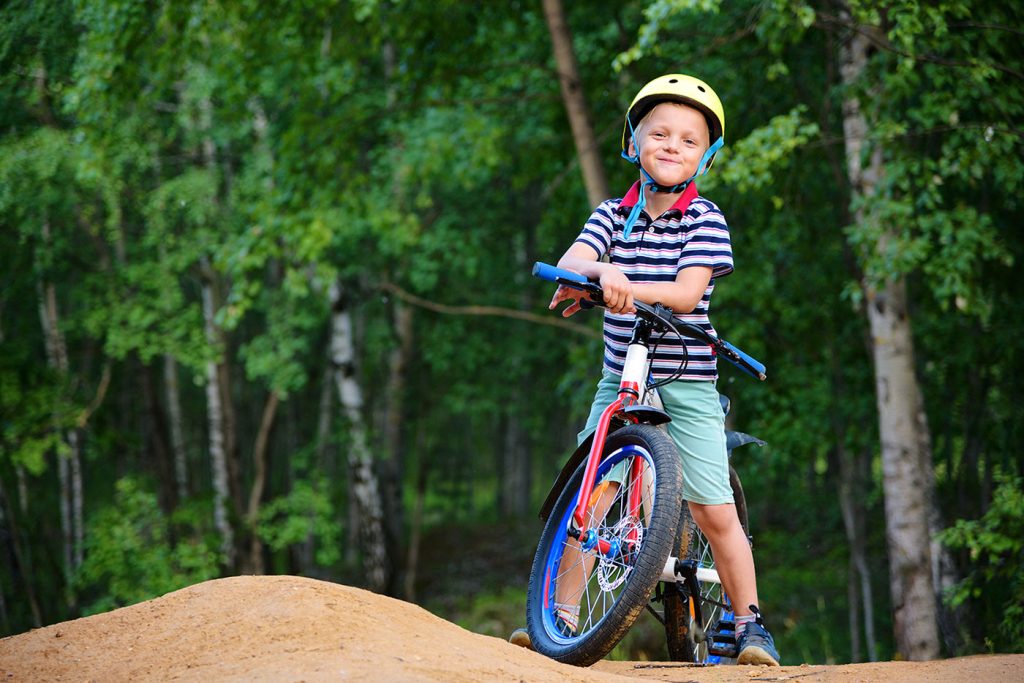
Once your child has outgrown 20″ single speed bikes, your choice is a 20″ or 24″ MTB or a 20″ BMX. This will happen around 7 or 8 years old.
20″ MTBs are all the same frame size and are normally simple bikes with standard forks and brakes. They’re light and easy to ride with basic 7 or 8 speed gears.
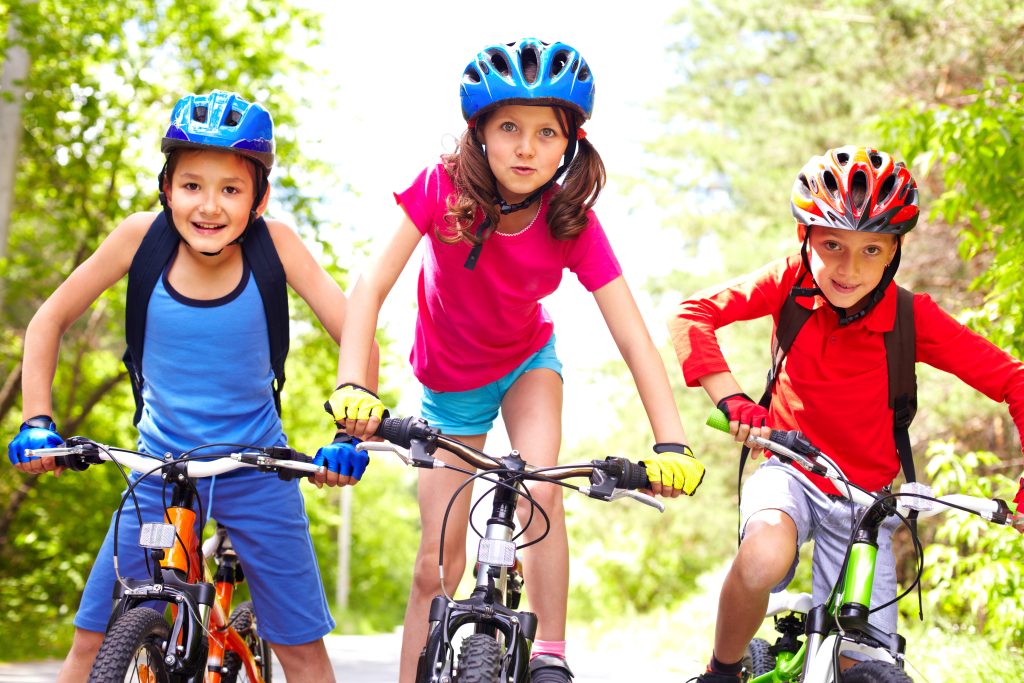
24″ MTBs can sometimes be optioned with things like suspension forks and disc brakes. Suspension forks add significant weight to a kids bike, so if you’re not out in the bush riding rough trails with jumps and drop-offs, choose an MTB that is light enough for your child to lift and push.
If your child is only riding their bike casually with friends or travelling to school then suspension forks and disc brakes are often an unnecessary additional cost.
26″ MTBs often feature all the same tech as the adult bikes with a price tag to match. They normally have suspension forks and disc brakes, and are ready for the roughest trails and off-road riding.
If your child’s school has MTBs as a school sport then you’ll need a lightweight MTB that has been built for competition. We have these options in both hardtail and dual-suspension models.
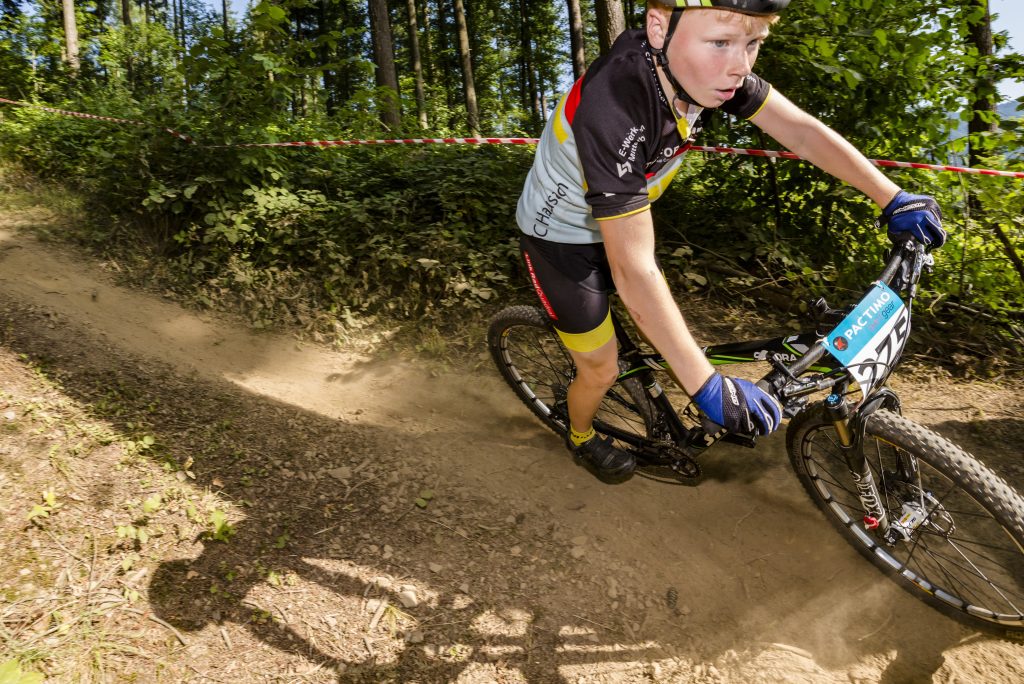
Hopefully this has answered your basic questions about kids bikes.
We have a simple measuring system in the store which will size up your child and remove all the guesswork. You’re welcome to come into the store and one of our team will help you choose the right size bike for your child. You can also call us on 4909 8492 with your child’s height and age and we’ll make some suggestions to help.
Ready to go shopping for kids bikes? Start here!
